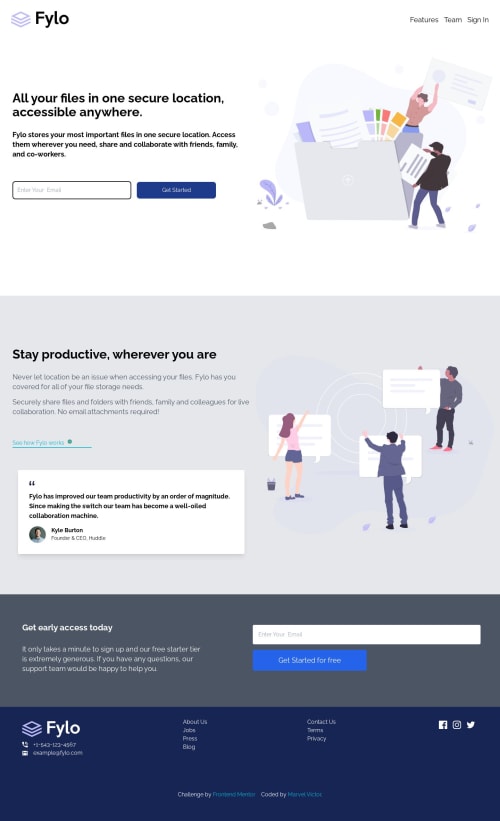Submitted about 2 years agoA solution to the Fylo landing page with two column layout challenge
Fylo Landing Page With Two Column Layout Using Tailwind CSS
tailwind-css
@Mharvel13

Solution retrospective
I did this using Tailwind CSS. I'd like feedback and comments on the overall project and design layout.
Code
Loading...
Please log in to post a comment
Log in with GitHubCommunity feedback
No feedback yet. Be the first to give feedback on Marvel Victor's solution.
Join our Discord community
Join thousands of Frontend Mentor community members taking the challenges, sharing resources, helping each other, and chatting about all things front-end!
Join our Discord